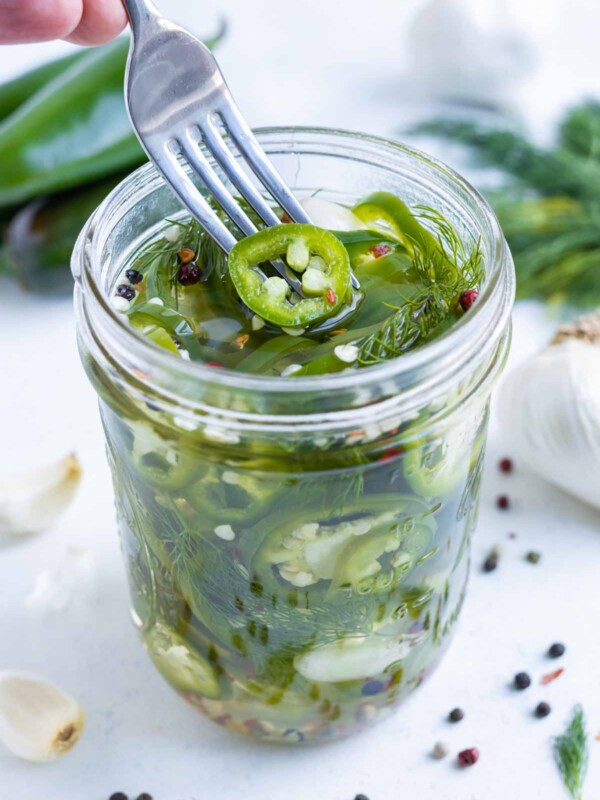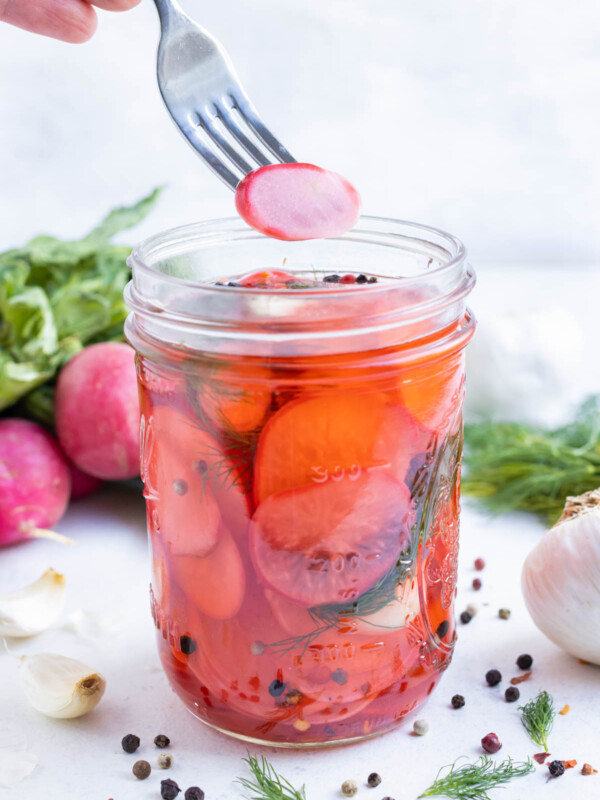So you’re wondering, what are grits? Learn all about this dried corn ingredient, including how grits are made, how to incorporate them into everyday dishes, and the nutritional value they add to your diet. Grits are a classic staple of Southern cuisine and the perfect addition to any weeknight dinner with some of our favorite recipes!
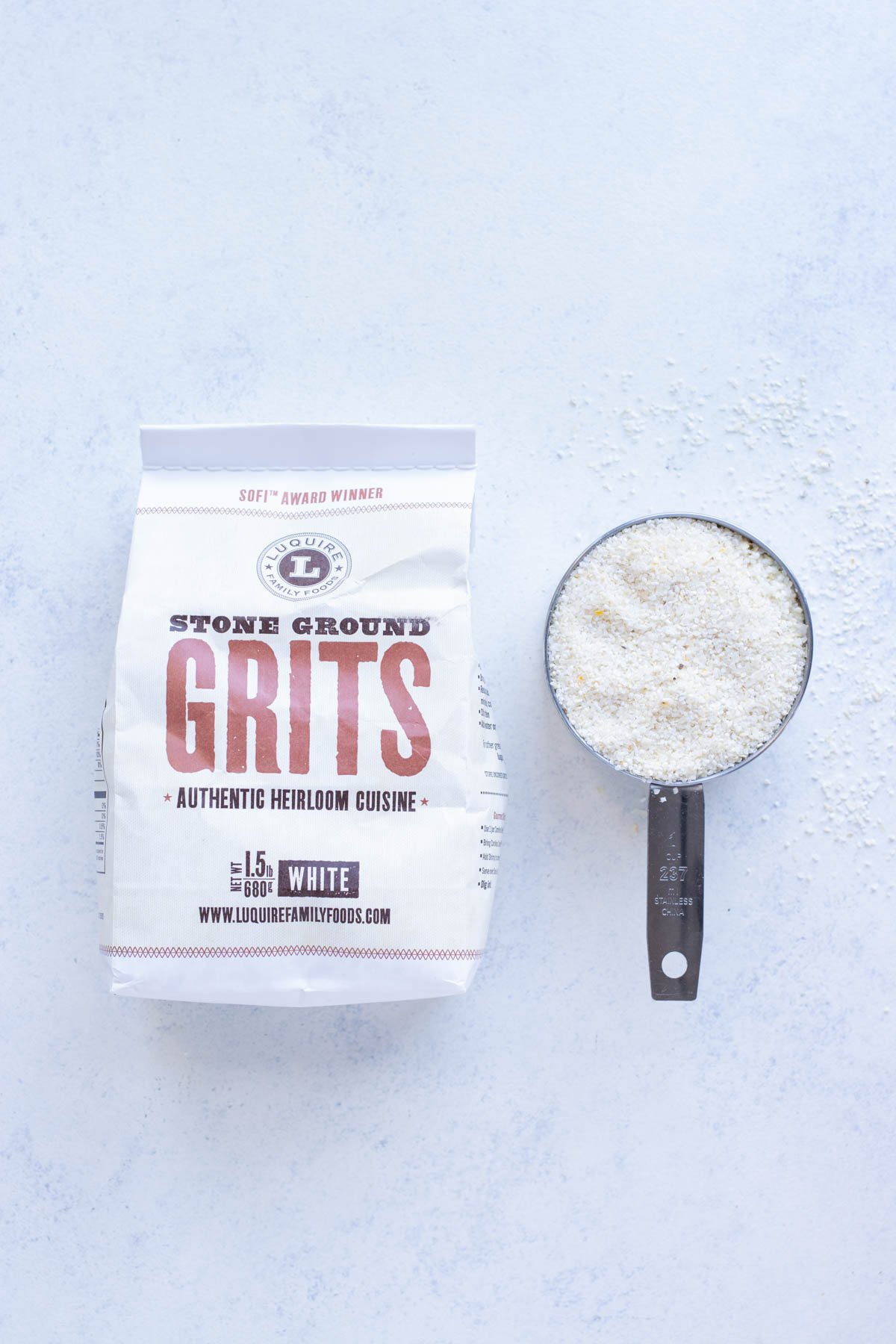
What are grits?
Grits are made from ground or crushed dent corn and cooked in either milk, hot water, or broth until they are soft and creamy. Dent corn is a starchier, less sweet variety of corn with a neutral and mild flavor. This makes stone-ground grits a perfect pairing in any side dish, main dish, or even sweet treat.
Some people commonly mistake grits as Cream of Wheat (also known as farina), but that’s certainly not the case. Cream of Wheat has similar textures to grits, but grits are made from corn, whereas Cream of Wheat is made from wheat.
Grits actually originated from the Muskogee people, a Native American tribe now based in Oklahoma and Florida. In the 16th century, they lived throughout the southern states of Tennessee, Alabama, Georgia, and Florida. They served these coarse, gritty-textured grits to the colonists, who in turn incorporated it into their diets.
What are the different types of grits?
There are several types of grits. They vary based on how they are made and how long it takes to cook them. Here are a few of them:
Quick Grits / Regular Grits
To make quick or regular grits, corn is ground to a point where the outer shell and germ are removed. Because that outer shell and germ are removed, it gives them a longer shelf-life than grits that have all the parts (like stone ground). When you have all parts of the grits intact, they don’t last as long and usually need to be stored in the freezer to stay fresh for a longer period of time. Quick grits have a finer texture, and regular grits are medium ground. These grits take about 8-10 minutes to cook because they are not precooked.
Stone Ground Grits
Stone-ground grits are made from the whole corn kernel, so they are coarsely ground in a mill. They can last up to a year in your pantry, making it an easy Southern staple in your kitchen. These take anywhere from 30-60 minutes to cook and are becoming easier to find in grocery stores.
Instant Grits
The germ and outer shell are removed from this type of grits, making them a very fast and easy cook. It takes a whopping 3-4 minutes to make these because they are “precooked.” Instant grits are considered the “minute rice” of grits.
Hominy Grits
These grits are made by soaking corn kernels in an alkali solution to soften the tough outer shell. Once the outer shell is softened, the rest of the kernel is rinsed to undergo more processing. These coarser grits take about 30 minutes to cook.
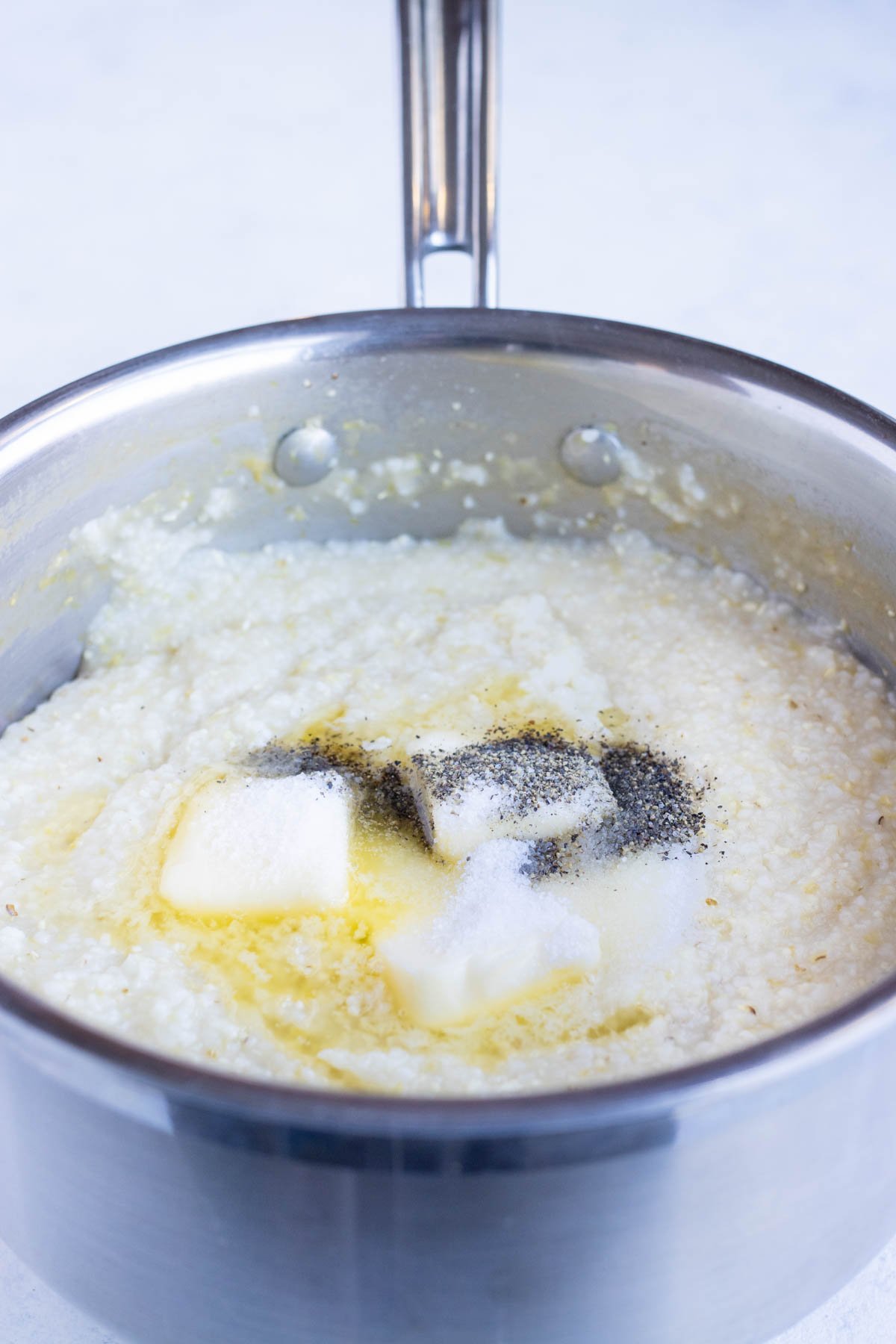
Are grits nutritional?
Grits are packed with nutritional value. They are rich in iron which is essential for red blood cell production. Grits contain B vitamins, folate, thiamine, potassium, and calcium. Here’s a break-down of what ¼ cup of raw grits (which becomes 1 cup when cooked) contains:
| Calories | 154 |
| Protein | 4 grams |
| Fat | 1 gram |
| Carbohydrates | 33 grams |
| Fiber | 1 gram |
| Sugar | 0 grams |
Additionally, there are some health benefits to incorporating whole grits into your diet. Whole grains like grits reduce the risk of heart disease and Type II diabetes and provide many antioxidants to help regulate cellular damage from free radicals.
Grits can support excellent eye health because of antioxidants lutein and zeaxanthin. These antioxidants protect against age-related eye diseases. Because grits are so high in iron, they can reduce the risk of anemia, which is very common at all ages.
Grits are also gluten-free since they are made from corn. However, if you have celiac disease or a gluten sensitivity, be sure to check for certified gluten-free labels on packaging, as grits can be cross-contaminated if they are processed in factories with gluten-containing foods.
Are grits and polenta the same?
No, grits and polenta are not the same. They do have similarities, but also have some major differences too. The main difference is that polenta is made with yellow corn and is ground several times through the mill. Southern grits are white corn, ground once through the mill offering a more coarse texture. Because they resemble each other so closely, polenta is considered the Italian version of grits.

How do you eat grits?
Grits can be added to any breakfast dish or main dish as a side, and here are just a few ways to do this:
- Grits are a great companion with eggs, and bacon or sausage in the morning.
- Cajun Shrimp & Grits are one of the most popular, classic pairings.
- Cheese Grits in a casserole make for a hearty, delicious meal.
- Spice up your side dishes with grits over meats like beef or chicken instead of the typical rice.
- Grits with maple syrup and berries is a fun spin on your average morning parfait.
- Grit cakes—similar to the concept of crab cakes—can be added to any meal for a fun side.
Grits Alternatives
Since grits are usually a side dish, they can be switched in and out of many recipes. If you find recipes that have polenta, oatmeal, Cream of Wheat, mashed potatoes, or risotto, you can replace any of them with grits and be just as happy.
Where do I buy grits?
The most common store-bought Southern grits brands are Anson Mills and Geechie Boy. You can order Carolina Grits and Marsh Hen Mill grits online in the United States. But, if you’re in the South, finding grits at a farmer’s market is always the best, freshest, most authentic option.
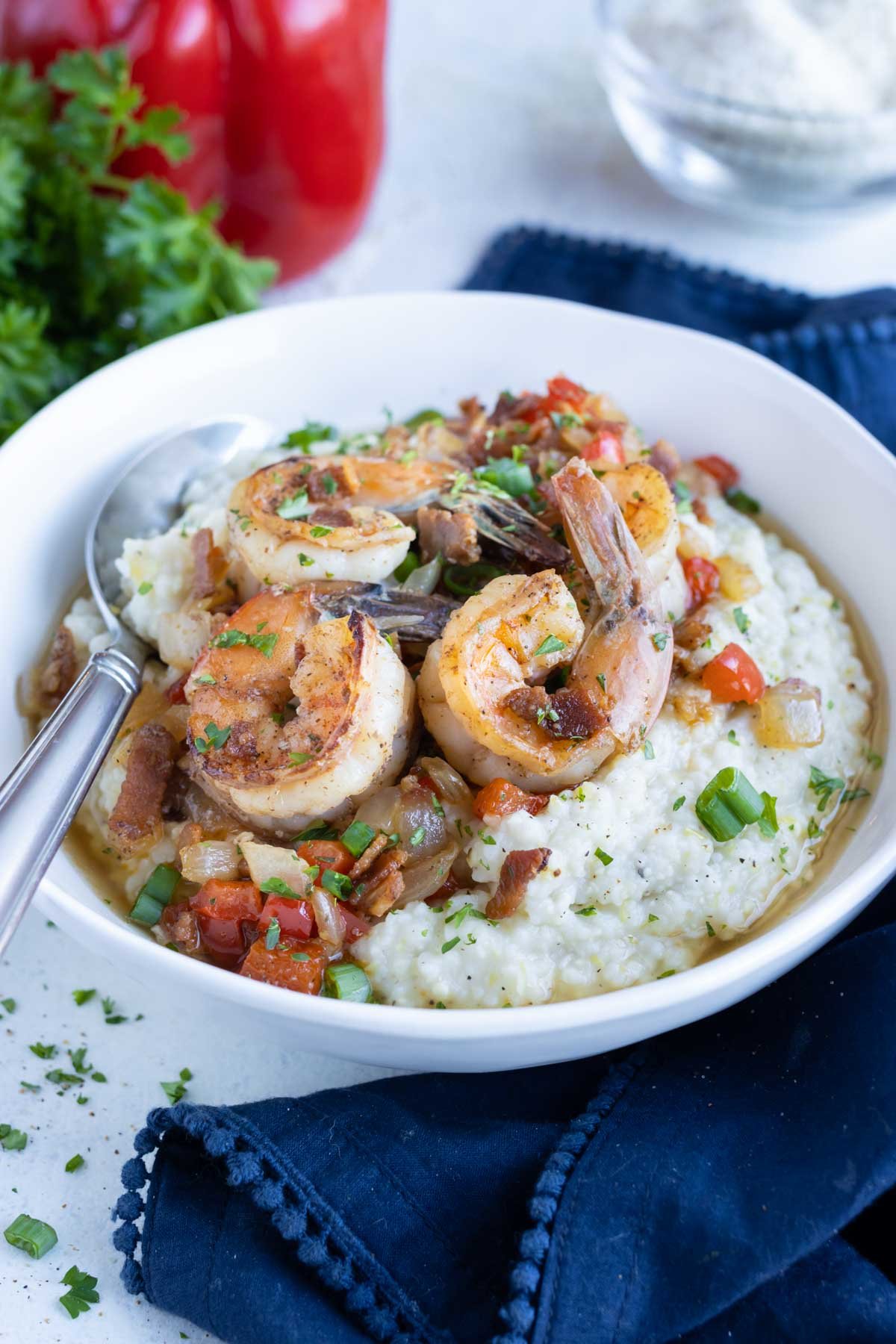
The Best Grits Recipes
These recipes showcase grits and give you opportunities to experiment with swapping grits in for the carb or veggies that are called for. Give them a try:
